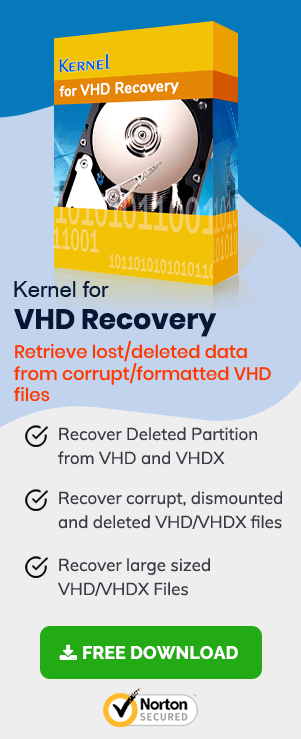In this blog, learn about the Virtual Hard Disk (VHD), its significance, and its benefits for its users in detail. Apart from this, readers will get to know about the most popular and efficient VHD/VHDX recovery tool available in the market.
Overview of Virtual Hard Disk
Virtual Hard Disk or VHD is the hard disk of virtual machines like Hyper-V, VMware Workstation, etc. It supports the hosting of different operating systems on a single host system. They are helpful in many tasks such as transferring files between the host system and Virtual Hard Disk, data backup & recovery, disk conversion from physical to virtual, and the opposite.
The two types of VHD formats are briefed below:
Fixed VHD: This type is allocated with fixed Virtual Disk Drive size and consumes fixed storage space on the host machine Hard Disk Drive. It provides the fastest mechanism with constant fragmentation throughout.
Dynamic VHD: This VHD type is of varying size and can grow gradually with the addition of more data to it which means it is of the same size as the data written to it at that time. It offers quick storage space allocation.
There are different ways to mount and unmount VHD/VHDX files through Disk Management or Windows Explorer.
How beneficial is booting the system with Virtual Hard Drive?
A virtual drive can host multiple OS like Windows, Mac, etc., and it is quite helpful for developers to test their products, website, and applications on different environments on a single hardware system with the use of Virtual Machine like VirtualBox.
Let us get more advantages of using Virtual Hard Drive on the system.
- Convenient deployment: Deployment of VHD file is quite flexible with the provisions for standard and pre-built configurations in VHD files for testing and working on specific projects in specific OS environments.
- Quick backup and restore: If there are modifications in VHD files data due to any reason, including accidental data deletion, malicious file, etc., then the recovery is possible without much effort
- Snapshots recovery: Snapshots facility for existing configuration of Virtual Machines via Virtual Machine applications lets user revert to that stage of snapshot from where the installation issues have started and thus deliver quick snapshot recovery.
- Easy replication: It helps the user or developer save his work to be easily replicated or copied to another system for another developer.
- Complete isolation for multiple users: It allows multiple users to work on Operating Systems of their choice on a system without interference from other users.
- Cost-effective: VHD storage and deployment are cost-effective as it eliminates the need for multiple systems (hardware) with different OST environments (installation).
VHDX is better than VHD – How?
VHDX is the newest, advanced version of the VHD file, which supports .vhdx extension and holds more storage capacity than the VHD format. It is mounted just like VHD but has multiple benefits when compared to the VHD file format as mentioned under.
- VHDX files storage capacity is 64TB while that of VHD is 2TB storage only
- VHDX file keeps metadata updates tracking and provides data protection against power failures, but this feature is missing in VHD files
- VHDX files show better performance than VHD files with more adaptability to modern hardware
- VHDX file has 4KB logical sector size where VHD file supports 512 bytes logical sector size only
- VHDX files support custom metadata, while VHD files do not
- VHDX files support live resizing, while VHD files do not
When do you need a VHD/VHDX Recovery tool?
VHD or VHDX files are also prone to corruption like other files stored on the system. The top 3 reasons why VHD/VHDX file is corrupted and unreadable can be mentioned as damaged/corrupted hard disk storage, file transfer via virtual drive in bad network conditions, and interference of third-party programs like antivirus.
The situation of corruption is undeniably stressful, and we are here to deliver our best recommendation to the readers, i.e., the VHD Recovery tool. The tool supports the advanced recovery of corrupted, damaged, inaccessible data from VHD and VHDX files automatically and instantly.
FAQs
A- As mentioned in the blog, it has advantages such as more storage capacity, better performance, protection against power failures, and more. VHDX files are better, but it all depends on the user’s requirement as VHD files can be mounted on more OS versions than VHDX files.
A- VMDK or Virtual Machine Disk File is a VMware-supported file format for storing complete information about Virtual Machines. It is an open-source file format utilized for testing, cloud computing, and many other virtualization services.
A- To have the complete information related to the difference between VHD and VMDK file, visit this blog link – Difference Between VHD and VMDK Files (nucleustechnologies.com)
A- Using the free version of the VHD Recovery tool, users can recover and preview the complete data but save up to 250 MB of data only.
A- The Save Snapshot feature of the tool lets users save the progress of the recovery process as a .nkfn file. This saved file can be loaded anytime later to continue the recovery process from when the snapshot was saved. It eases the recovery process without any extra time consumption.

